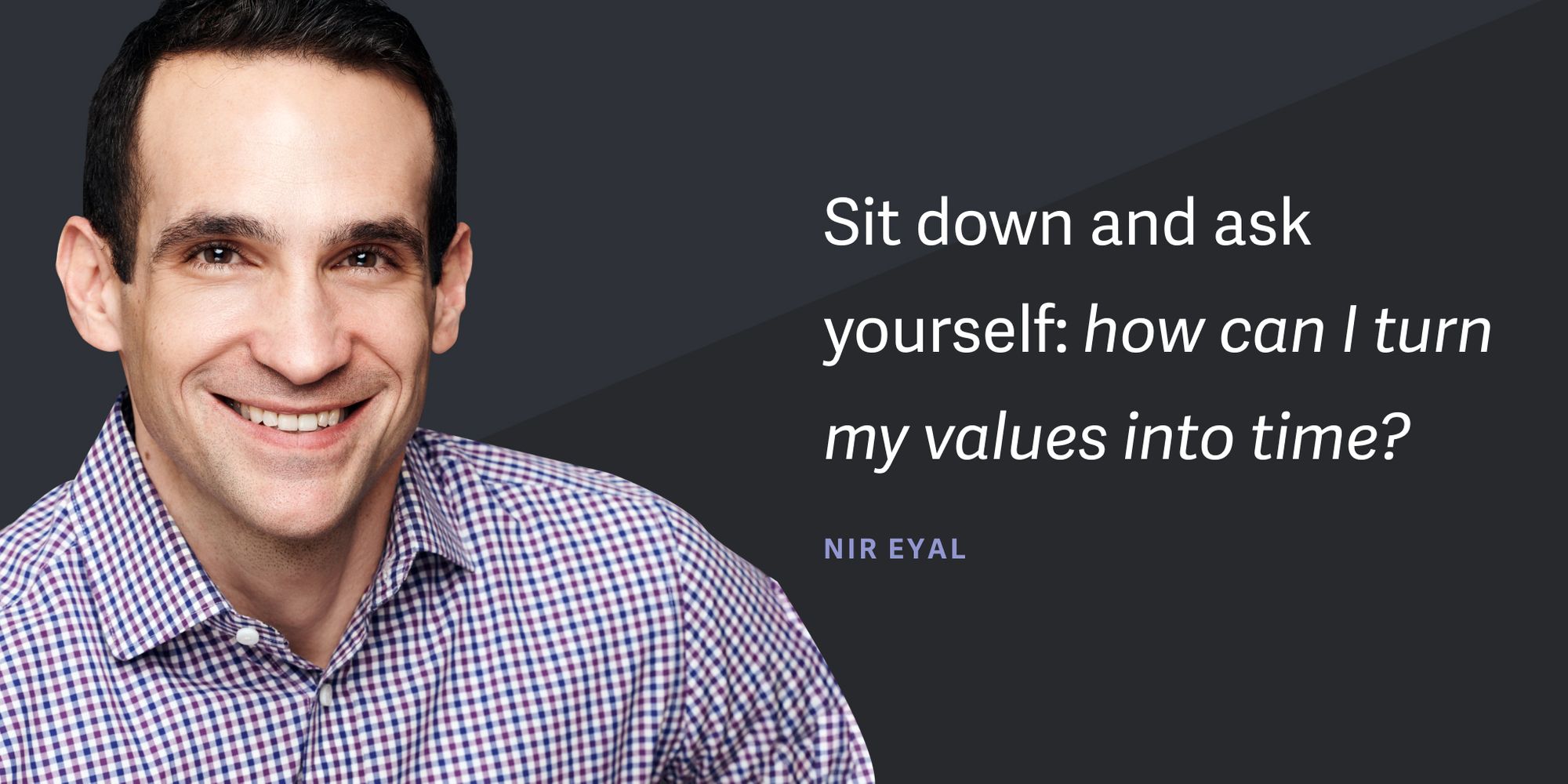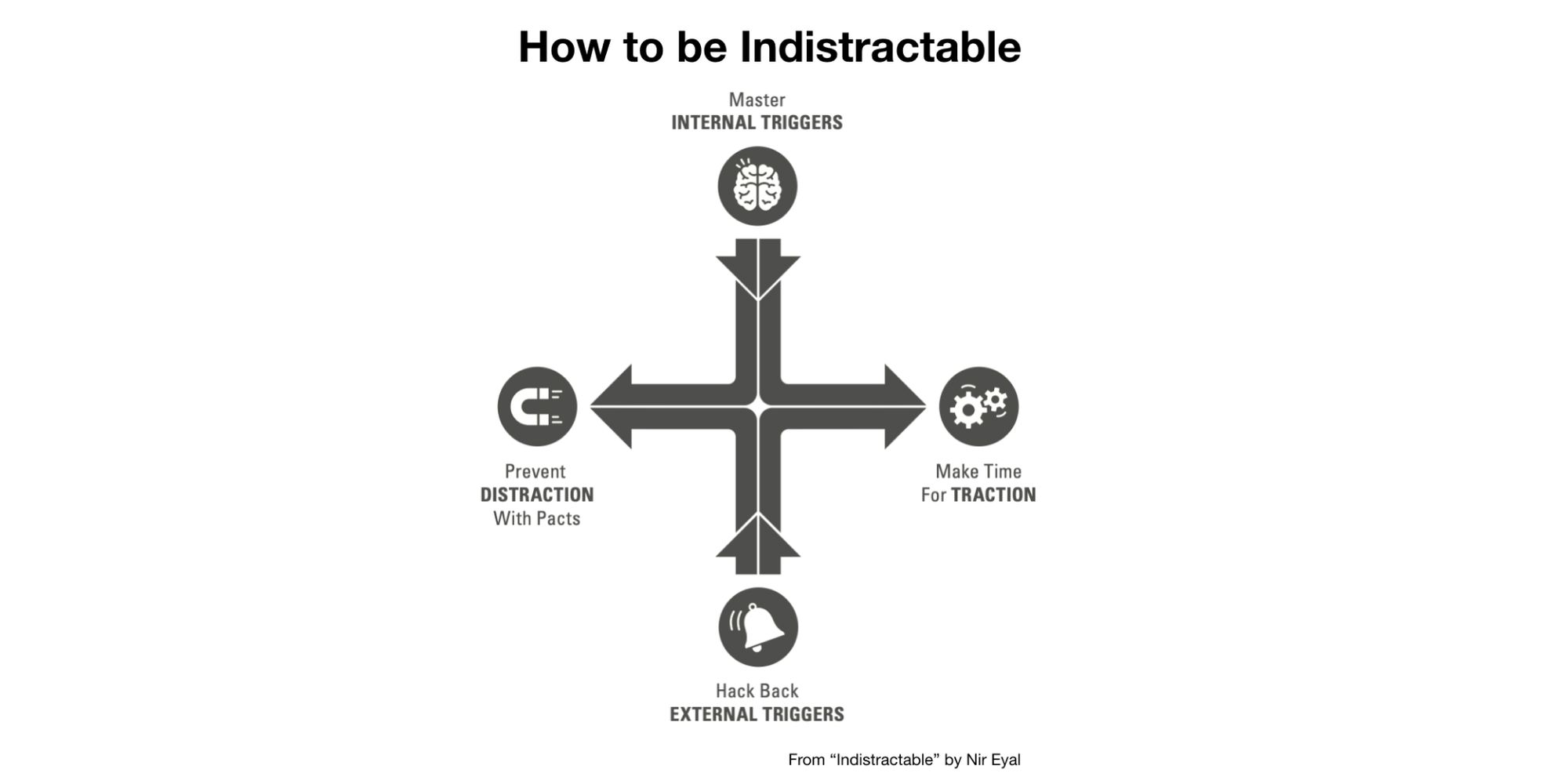
Many of us strive to be "indistractable". This means we set out each day to complete our important tasks while avoiding distractions, which could derail us from achieving our flow state.
To behavioral expert Nir Eyal, being indistractable is something he's studied extensively in recent years. As a Stanford lecturer, best-selling author, and behavioral design expert, Nir has dedicated years of his research and expertise to learning about distractions — and how we can better avoid them. After 5 years of studying human behavior, he developed a research-backed, 4-step framework for becoming indistractable, which he detailed in his book Indistractable: How to Control Your Attention and Choose Your Life.
We wanted to learn more about how to become indistractable ourselves, especially in this time when it seems more challenging than ever — so we asked him to share some of his techniques. Here's what he had to say about becoming indistractable today, when distractions surround us.
What does 'indistractable' mean?
Don't worry — an indistractable person isn't one who never gets distracted. That's just not possible, especially in today's digital, work-from-home world, where many of us spend more than half the day looking at screens — and where there's always a potential distraction lurking.
"The difference between an indistractable person and a distractable person is not the indistractable person never gets distracted. That's impossible," Nir explains. "Everyone gets distracted from time to time."
He continues, "The definition of an indistractable person is that they know why they got distracted, and they can do something about it. So a distractable person keeps getting distracted by the same thing again and again and again, and they don't do anything about it. They're the victims. Whereas an indistractable person says, 'OK, I got it, I knew what I wanted to do.'"
Being indistractable, based on Nir's research, doesn't mean being immune to distractions. It means being able to recognize when — and, more importantly, why — you're becoming distracted. Then you can make adjustments to overcome distraction and avoid being impacted by the same type of distraction again.
By employing Nir's 4-step framework, all kinds of people — from habitual procrastinators to those already well-versed in productivity and self-control — can learn to identify and avoid their most common distractions. That means they can stay in a state of deep work or flow for longer, and be more productive.
Nir Eyal's top 4 tips for becoming indistractable
In Indistractable, Nir introduces these 4 steps for avoiding and overcoming distractions.
1. Master your internal triggers
The root cause of all distractions is an internal trigger — a feeling that underpins your desire to avoid the task at hand.
"Internal triggers are uncomfortable emotional states that we seek to escape from," explains Nir. "With heightened anxiety and fear, we have more of these internal triggers. The world has become more uncertain, we worry about our health, many of us are worrying about keeping our jobs."
To become indistractable, assess your internal triggers honestly. Are you reading headlines or checking Twitter to be informed — or are you fleeing reality?
"We start to have a problem," says Nir, "if we watch the news so that we can worry about somebody else's problems halfway around the world — as opposed to focusing on what's going on in our own life."

2. Make time for traction in your day
The key to focused work is setting an intention and building it into your calendar. This is sometimes called "timeboxing" — the act of setting a block of time in your calendar that is meant for accomplishing a specific task.
"It's absolutely critical — not only in our work life, but also our personal life — to schedule our time," Nir advises. "That's the only way to know the difference between traction, the actions you intend to do, and distraction, everything else."
He adds, "Sit down and ask yourself: how can I turn my values into time? We should measure ourselves based on whether we did what we said we were going to do, for as long as we said we would — without distraction."
Many successful Superhuman users find that one way to make time for traction is by scheduling 1-2 times per day to check their email and clear their inbox by using keyboard shortcuts to triage messages at high speed. By doing that, you open up the rest of the day for other important tasks — and, as a bonus, you avoid being distracted by the constant onslaught of incoming email notifications.
Of course, it doesn't hurt that Superhuman users also get through their inbox twice as fast, freeing up more calendar space to schedule time for other important tasks.
Get started with Superhuman3. Hack back external triggers
What about distractions that arrive externally, like social media notifications? For Nir, the key is customizing your setup.
"There's no doubt that media companies are hacking your attention," says Nir. "That doesn't mean we can't hack back: by turning off notifications, decluttering our desktops, changing our phone settings."
The same goes for other platforms. Superhuman helps manage email stress, by highlighting important messages with triage and empowering you to defer or delegate the rest. Adjusting your Slack notification settings can also help keep "pings" from your coworkers at bay. Many times, the source of distractions can simply be turned off, or adjusted to limit distractions during certain times or from certain platforms.
But since the start of the pandemic, more of us than ever before are increasingly working from home amid other distractions — pets and family members, or the lure of video games or a Netflix series when there's still meaningful work to be done. Now that the lines have become more blurred between our personal and professional lives, not all external distractions can be switched off!
"When you have other people who share your space at home, and you're trying to get work done, you have to interrupt the interruption," Nir says. "In my family, when my daughter was just 6 years old, we got what we call the 'concentration crown'. It's just a silly little hat that we wear! Whenever we do reflective work, we wear the concentration crown. This sends an explicit message to my daughter that we can't be interrupted."
4. Prevent distraction with pacts
These 3 steps create a solid foundation for the final technique: effort pacts.
"They are promises that we make with ourselves, with somebody else, or with a technology, to prevent us from getting distracted," explains Nir. "It's the firewall against distraction — the last line of defense."
Effort pacts are pre-commitments to a course of action. Make effort pacts when you're in a clear frame of mind, and you're less likely to act against your best interests later.

Nir's indistractability toolkit
To make yourself even more indistractable, embrace the help of outside tools that are meant to do just that. Nir personally recommends these tools, and they should be able to help just about anyone cut down on distractions, find their flow, or both.
"There are tools that I use every single day," says Nir. "In case everything else fails, they prevent me from getting distracted."
- SelfControl — a free desktop app that blocks distracting websites for a set period of time.
- Forest — a free mobile app where planting a virtual tree acts as a prompt to leave your phone alone.
- Focusmate — connects you to another person somewhere in the world who also wants to do focused work.
- Indistractable — Nir's award-winning book on how to control your attention and choose your life.
- Superhuman — the world's fastest email experience.
For more tips on avoiding distraction and hacking your own productivity, check out these resources:




